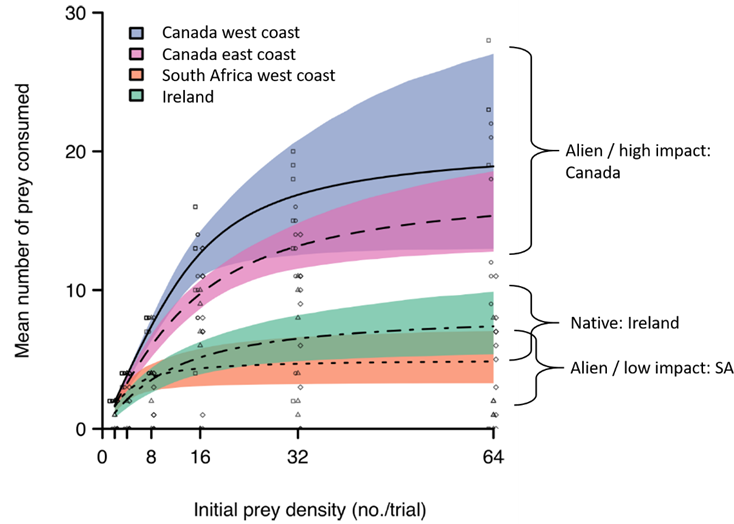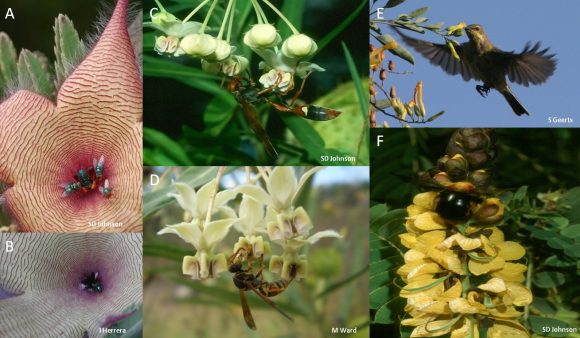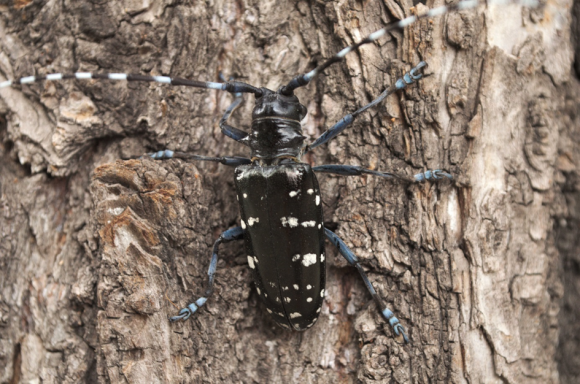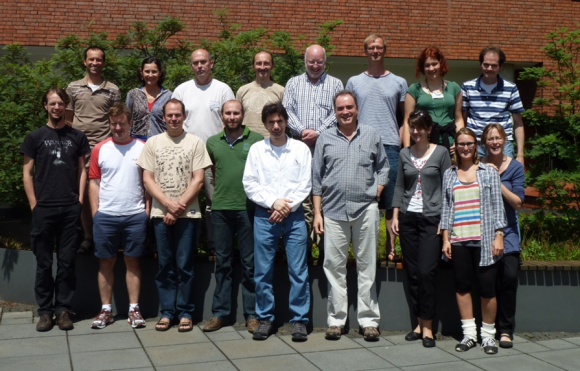Because resources for addressing environmental problems are limited, it has been suggested that management should focus on those species that have the highest impacts in their new environments. Comparing the ability of alien and native species to utilize resources has been shown to offer a sound approach for identifying alien species with high impacts. However, is resource utilization by species standard in different geographic regions? This was the topic addressed in a paper produced by a collaboration of international researchers, including C·I·B Core Team Member Tamara Robinson and C·I·B Associate Mhairi Alexander.
The European green crab (Carcinus maenas) is native to Europe and the United Kingdom but is a well-known invasive species that occurs in intertidal and shallow subtidal habitats around the world. This makes it a good candidate for testing how resource utilization varies between native and multiple alien ranges. By offering alien crabs from the west and east coast of Canada and the west coast of South Africa a standard mussel prey, and comparing their attack rate, handling time and feeding rates with native crabs from Ireland, researchers found some interesting patterns.
Firstly, all three measures of resource utilization differed among regions, with invasive crabs having higher attack rates than those in their native region. Secondly, in Canada where the crab has its highest impacts, crabs had the highest feeding rates. This is in contrast to lower feeding rates in South Africa where impacts are similarly less.
This study has demonstrated the resource use of a single species can vary geographically. Importantly, this variation is seen not only between alien and native ranges, but also among alien ranges with resource use mirroring impact.
Read the paper
Howard, B.R., Barrios-O’Neill, Alexander, M.E., Dick, J.T.A., Therriault, T.W., Robinson, T.B. and Côté, I.M. 2018. Functional responses o f a cosmopolitan invader demonstrate intraspecific variability in consumer-resource dynamics. PeerJ. https://doi.org/10.7717/peerj.5634
For more information, contact Tamara Robinson at trobins@sun.ac.za




